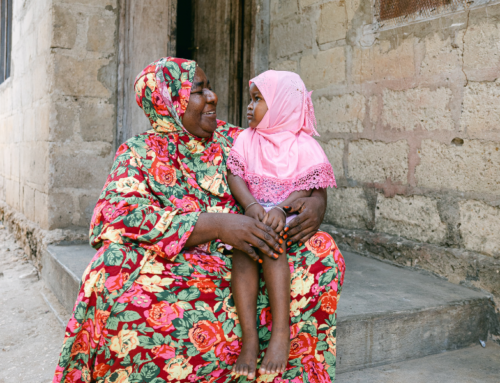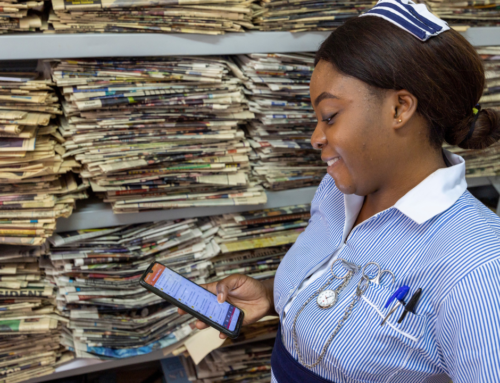
Written by Melina Kalamandeen of Amref Health Africa in Canada, Saifullah Chaudhry of Development Impact Solutions, and Julie Truelove of WaterAid
Every year on October 16, World Food Day raises awareness of the fight against hunger and promotes action for the future of food, people and the planet. Today, 2.4 billion people live in water-stressed countries. We have 600 million people who rely on aquatic food systems for a living suffering the effects of pollution, ecosystem degradation, unsustainable practices and climate change, making this year’s theme, “Water is Life, Water is Food. Leave No One Behind” even more timely.
Leave no one behind: How women and girls are affected by the water crisis
Women and girls are disproportionately affected by this water crisis. Water security depends on who you are, where you are and what you need to use water for – whether you need water for sanitation, hygiene and daily household use, irrigation of subsistence farming and market gardens or large-scale agriculture production; or water needed for small business or more extensive industry or hydropower.
In times of water scarcity, women and girls are on the frontlines. They are the ones who hold this undervalued and gendered role as water stewards striving to manage enough water for sanitation, hygiene and daily household needs. If all women and girls had clean water at home, it would save more than 77 million working days each year which are currently spent collecting water. When water resources become scarce, gender inequalities also impact its allocation. This means that the voices of women and girls are not heard, and their needs are not met, which poses a risk to their health, prosperity, and safety.
This is further exacerbated in times of crisis such as during droughts and floods, which impact safe access to water sources as well as crop yields and food production. In 2022, the floods in Pakistan affected 33 million people and damaged most of the water systems in affected areas, forcing more than 5.4 million people to rely solely on contaminated water from ponds and wells.
Women and girls were disproportionately affected by the floods. Gender-based violence, including intimate partner violence, increased. Supply chain disruptions, inadequate WASH (Water, Sanitation and Hygiene) facilities, and cultural taboos limited their access to menstrual products, impacting their health, dignity and well-being. As access to clean water and WASH facilities was limited, women and girls had to walk farther to fetch water, while pregnant and lactating women did not get enough nutritious foods, sufficient rest, or access to proper medical care.
Similarly, it is anticipated that El Niño will strike East Africa, between October and December 2023, resulting in several countries facing severe and intense heat waves, wildfires, floods, droughts and epidemics. This comes with increased health risks for women and girls because of gender inequalities that limit their access to health care, education, leadership opportunities and resources which exacerbates their vulnerabilities during and after climate-related disasters. In these circumstances, Amref’s WASH programs ensure communities have adequate capacity to develop, operate and maintain their water sources as well as improve sanitation and hygiene practices in a sustainable way with a view to preventing and controlling water- and sanitation-related diseases while improving nutrition and livelihoods.
Locally-led solutions: Centering the voices of women and girls
Including local and traditional knowledge has to be central when designing programs. In particular, women’s full and meaningful participation in water decisions are essential to improving and addressing water security and basic needs for WASH. As identified in an International Rescue Committee (IRC) field research with flood-affected communities in Pakistan in 2022, led by Saifullah (soon to be published), promoting women in leadership roles for water and food governance and management will ensure that the needs of women, pregnant women, lactating women, adolescent girls and persons with disabilities are addressed in the face of water crises.
WaterAid’s work in Burkina Faso is an example of how organizations can promote locally-led solutions and utilize women’s knowledge to address water issues. In Tollingui, a rural community in Burkina Faso experiencing increased drought conditions due to climate change, two voluntary local water monitors were nominated by the community to be trained to measure and record rainfall throughout each year. By training both women and men as local water monitors, the community is learning what the data means for their local food production and outlook for future water demands.
Similarly, Amref Health Africa has developed digital tools, such as M-Jali, to enhance syndromic surveillance in communities and has paved the way for timely responses to health trends, particularly those associated with climate change-related challenges. Governments and healthcare facilities gain invaluable insights from accurate and real-time health data into the health status of their communities, enabling them to allocate interventions and resources effectively and efficiently, including for WASH programs. Training women and girls to use tools like this ensures that they are part of the solution and can actively participate in decision-making.
At the same time, it is essential to provide opportunities for women and men to reflect on stereotypical gender norms that limit women’s access to information and resources and make them more vulnerable to gender-based violence during emergencies. This is crucial for improving women and girls’ access to water resources and WASH facilities and for mitigating the impact of water crises.
Making change happen
Working at the intersections of SDG 6 (clean water and sanitation for all) and SDG 5 (gender equality) calls for key actions.
Shifting emergency responses: Due to limited response times, emergency responders use existing information. However, they must ensure that their staff in the field also performs a rapid assessment in order to map out gender and social inclusion-related unique needs, especially around water and nutrition. This will allow organizations to respond to the unique water and nutrition challenges of the affected population during implementation, even if those issues were not factored in at the project design stage due to the very short turnaround time.
Monitoring: Coordinating the mapping of water resources, managing conflicting demands for their use, and making decisions on water allocations and effective water supply management will require enhanced gender-responsive monitoring. This will entail incorporating specific measures related to water, gender, food, and climate into National Adaptation Plans. Additionally, it will involve active participation and striving for gender balance in climate negotiations, as exemplified in a case study from Ethiopia.
Investments: Stakeholders across sectors have long recognized water security and access to basic sanitation and hygiene for all as ‘no regrets’ investments for children, youth and future generations. The United Nations Framework Convention on Climate Change also recognizes WASH as a ‘low regrets’ adaptation measure to build the resilience of people to the effects of climate change.
Partnerships: Building and strengthening multisectoral partnerships for food security, water security and WASH for all is critical to achieving the SDGs and building a more equitable and healthier future in the face of climate change and biodiversity loss.
Blog post first published on: World Food Day: Taking Action for Women’s Leadership in Water Governance – CanWaCH
Learn more at:
https://www.linkedin.com/company/development-impact-solutions-islamabad-toronto/about/




